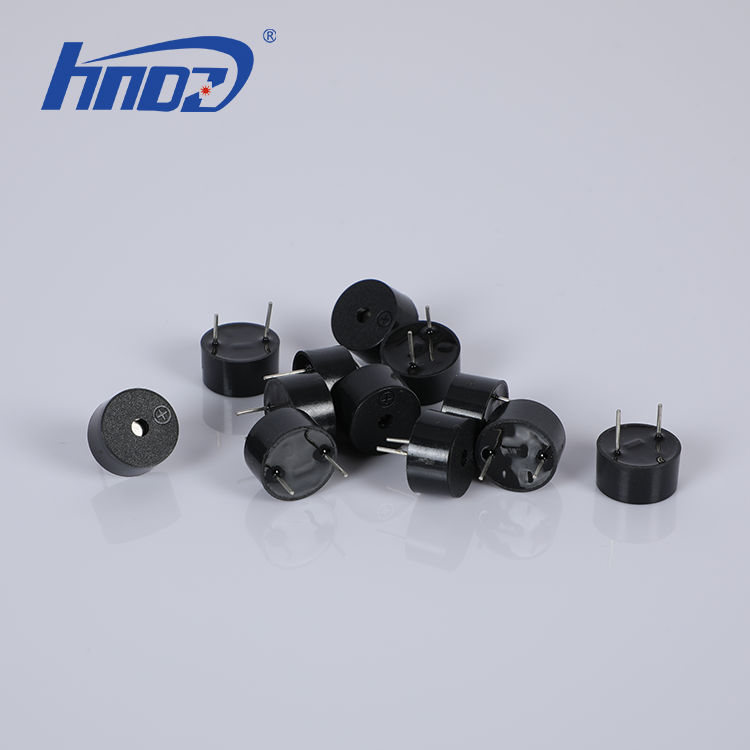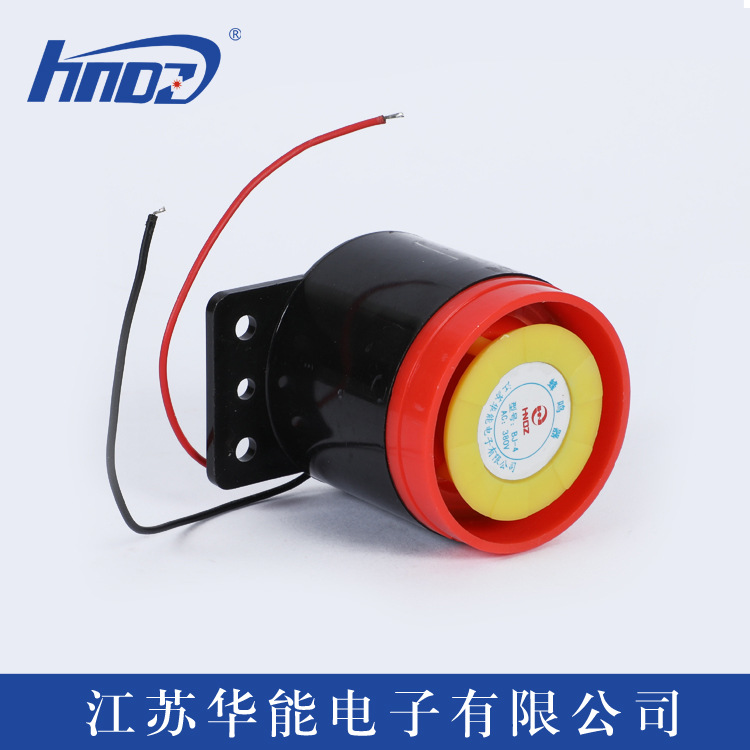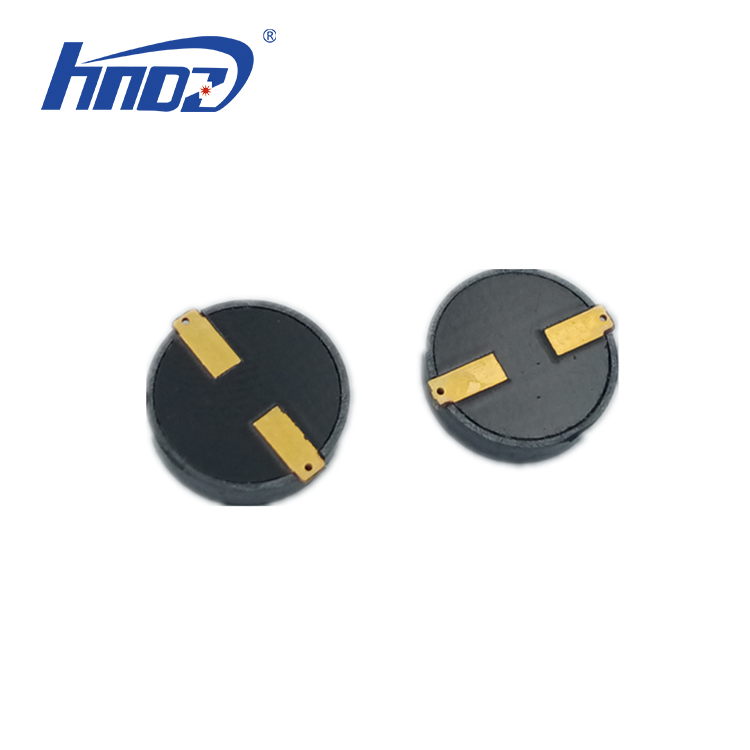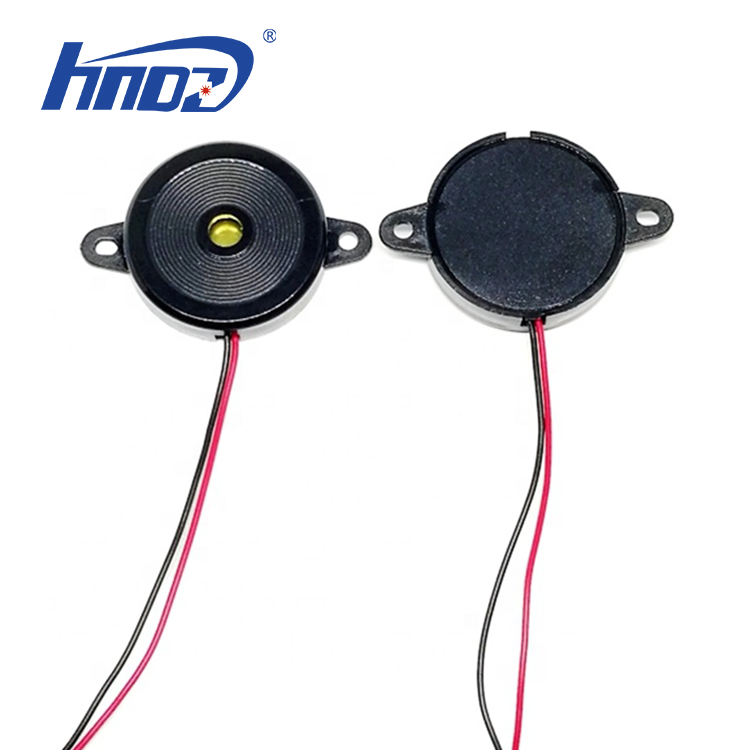One of the advantages of the SMD Piezo Buzzer is its low power consumption. It requires minimal energy to produce sound, making it suitable for battery-powered devices or applications that require energy efficiency. Additionally, the compact size and surface-mount package of the SMD Piezo Buzzer make it easy to integrate into electronic circuit boards.
In conclusion, the SMD Piezo Buzzer is an electronic audio device that generates sound using the piezoelectric effect. It converts an electric signal into mechanical vibrations, which are then converted back into sound waves. Its compact size, low power consumption, and versatility make it a popular choice for various electronic applications.
2. What applications is it suitable for? SMD Piezo Buzzers are widely used in various applications where a compact and efficient sound source is required. They are commonly found in electronic devices and systems across different industries. Here are some of the applications where SMD Piezo Buzzers are suitable:
Alarms and Security Systems: SMD Piezo Buzzers are used in alarms to provide audible alerts for security breaches, fire detection, and other emergency situations. They are also utilized in doorbells, motion detectors, and smoke detectors.
Consumer Electronics: SMD Piezo Buzzers are commonly found in consumer electronic devices such as mobile phones, tablets, laptops, and smartwatches. They are used for notifications, ringtones, and alerts.
Medical Devices: SMD Piezo Buzzers are employed in various medical devices, including patient monitors, infusion pumps, and medical alarms. They provide audible alerts for critical events, ensuring timely response and patient safety.
Automotive Applications: SMD Piezo Buzzers are used in automotive systems for warning signals, such as seatbelt reminders, door open alerts, and low fuel indicators. They help enhance vehicle safety and driver awareness.
Industrial Equipment: SMD Piezo Buzzers find applications in industrial equipment and machinery. They are used for signaling purposes, such as machine start/stop indicators, fault alarms, and equipment status alerts.
Home Appliances: SMD Piezo Buzzers are utilized in various home appliances like microwave ovens, washing machines, and refrigerators. They provide audible feedback and alerts for different operation modes or error conditions.
Electronic Toys and Games: SMD Piezo Buzzers are commonly used in electronic toys and games to produce sound effects, musical tones, and notifications. They enhance the interactive experience and engagement of users.
Communication Devices: SMD Piezo Buzzers are used in communication devices like two-way radios, intercom systems, and walkie-talkies. They provide audible signals for incoming calls, messages, or alerts.
Industrial Automation: SMD Piezo Buzzers are integrated into industrial automation systems to indicate various events or alarms, such as machine faults, process completion, or sensor detection.
Audiovisual Systems: SMD Piezo Buzzers are utilized in audiovisual systems, including multimedia speakers, gaming consoles, and public address systems. They provide sound effects and alerts for a better audio experience.
In summary, SMD Piezo Buzzers have a wide range of applications in different industries. Their compact size, low power consumption, and versatility make them suitable for various electronic devices and systems that require an efficient and audible sound source.
3. What are the advantages and disadvantages? SMD Piezo Buzzers have several advantages and disadvantages, which should be considered when selecting them for a specific application.
Advantages:
Compact Size: SMD Piezo Buzzers are designed to be small and lightweight, making them suitable for applications where space is limited.
Low Power Consumption: These buzzers consume minimal power, which is beneficial for battery-powered devices or applications that require energy efficiency.
Versatility: SMD Piezo Buzzers can be used in a wide range of electronic devices and systems across different industries due to their versatility.
Wide Frequency Range: They are available in various frequency options, allowing users to select the desired pitch or tone for their application.
Easy Integration: SMD Piezo Buzzers come in surface-mount packages, making them easy to integrate into electronic circuit boards during the manufacturing process.
Durability: Piezo buzzers are known for their durability and long lifespan, making them suitable for applications that require long-term reliability.
Disadvantages:
Limited Sound Output: Although SMD Piezo Buzzers can produce loud sounds, they might not be suitable for applications that require extremely high sound output.
Limited Sound Range: They are typically better suited for producing simple tones or alarms rather than complex sounds or musical tones.
Fragility: The delicate nature of the piezo element in these buzzers makes them more susceptible to damage if mishandled or exposed to excessive force.
Lack of Control: SMD Piezo Buzzers generally have limited control over sound parameters such as volume, tone, or sound patterns. They produce a fixed sound based on the input signal.
Sensitivity to Environmental Factors: Piezo buzzers can be sensitive to temperature extremes and humidity, which may affect their performance in certain environments.
In conclusion, SMD Piezo Buzzers offer advantages such as compact size, low power consumption, versatility, and durability. However, they also have limitations regarding sound output, range, fragility, control, and sensitivity to environmental factors. Evaluating these factors is crucial in determining whether an SMD Piezo Buzzer is the right choice for a specific application.
4. What are the installation and usage methods? Installing and using an SMD Piezo Buzzer is relatively straightforward. Here are the installation and usage methods for SMD Piezo Buzzers:
Installation:
Prepare the circuit board: Ensure that you have a suitable circuit board and necessary components to support the SMD Piezo Buzzer.
Determine the mounting position: Identify the desired location on the circuit board where the SMD Piezo Buzzer will be mounted. Consider factors such as sound distribution and accessibility.
Soldering: Apply a small amount of solder to the buzzer's solder pads and align them with the corresponding pads on the circuit board. Use a soldering iron to heat the pads and attach the buzzer securely. Be careful not to apply excessive heat that could damage the buzzer or the circuit board.
Verification: After soldering, visually inspect the connections to ensure they are properly soldered and secure. Check for any shorts or loose connections that could affect the functionality of the buzzer.
Usage:
Electrical connections: Connect the positive and negative terminals of the SMD Piezo Buzzer to the corresponding terminals on the circuit board. Refer to the datasheet or manufacturer's instructions for the correct polarity. Generally, the positive terminal is marked with a "+", and the negative terminal is marked with a "-".
Voltage and frequency: Determine the voltage and frequency requirements of the SMD Piezo Buzzer for your specific application. Ensure that the voltage supplied to the buzzer matches its specified operating voltage range. Similarly, ensure that the electrical signals fed to the buzzer are within the specified frequency range for optimal performance.
Control signals: Depending on your application, you may need to control the activation and deactivation of the SMD Piezo Buzzer. This can be achieved using microcontrollers, timers, or other electronic components to send appropriate signals to the buzzer. Follow the manufacturer's instructions or consult the datasheet for guidance on controlling the buzzer.
Testing and adjustment: After connecting the SMD Piezo Buzzer and setting up the control signals, test the buzzer by activating it with appropriate signals. Verify that the buzzer produces the desired sound or alarm. If necessary, adjust the voltage, frequency, or control signals to achieve the desired sound output.
Safety considerations: Adhere to safety precautions when using the SMD Piezo Buzzer. Avoid exposing the buzzer to excessive voltage or current that could damage it or the circuit board. Take necessary precautions to prevent short-circuits or electrical hazards.
In conclusion, installing and using an SMD Piezo Buzzer involves mounting it securely on a circuit board, connecting the terminals correctly, supplying the appropriate voltage and frequency, and controlling it with suitable signals. Following the manufacturer's instructions and considering safety guidelines will ensure optimal performance and longevity of the SMD Piezo Buzzer.
5. What should be paid attention to in maintenance and upkeep? Proper maintenance and upkeep are essential for ensuring the longevity and optimal performance of an SMD Piezo Buzzer. Here are some key points to consider:
Regular cleaning: Dust, dirt, and debris can accumulate on the surface of the buzzer and affect its sound output. Periodically clean the buzzer using a soft, dry cloth or a brush to remove any particles.
Avoid excessive force: SMD Piezo Buzzers have delicate components that can be damaged by excessive force or pressure. Handle the buzzer with care and avoid applying excessive force during installation, usage, or maintenance.
Check for loose connections: Over time, the solder joints or connections may become loose due to vibrations or thermal stress. Regularly inspect the connections to ensure they are secure. If any loose connections are found, re-solder them carefully.
Monitor environmental conditions: SMD Piezo Buzzers can be sensitive to temperature extremes, humidity, and moisture. Avoid exposing the buzzer to extreme heat, cold, or high humidity environments, as it may affect its performance. If required, consider using additional protective measures such as conformal coatings or enclosures.
Test the sound output: Periodically test the sound output of the SMD Piezo Buzzer to ensure it is functioning correctly. Verify that it produces the desired sound or alarm. If the sound output seems weak or distorted, check the electrical connections, voltage, and frequency to ensure they are within the specified range.
Follow manufacturer guidelines: Always refer to the manufacturer's guidelines, instructions, and datasheet for specific maintenance and upkeep recommendations. They may provide additional information, such as recommended operating conditions, cleaning agents, or specific precautions to be taken.
Keep documentation: Maintain proper documentation of the installation, maintenance, and any modifications made to the SMD Piezo Buzzer. This documentation can be helpful for troubleshooting and future reference.
Periodic inspection and replacement: With continuous usage, the performance of the SMD Piezo Buzzer may degrade over time. Periodically inspect the buzzer for signs of wear, damage, or decreased sound output. If necessary, consider replacing the buzzer with a new one to ensure optimal performance.
By following these maintenance and upkeep practices, you can extend the lifespan and maintain the reliable performance of the SMD Piezo Buzzer in your application.
6. How long is the lifespan? The lifespan of an SMD Piezo Buzzer can vary depending on various factors such as usage conditions, operating voltage, frequency, and environmental factors. In general, SMD Piezo Buzzers are known for their durability and long lifespan.
The lifespan of an SMD Piezo Buzzer is typically measured in terms of the number of operating hours. Most manufacturers provide an estimated lifespan based on the average usage conditions. This can range from thousands to tens of thousands of hours.
However, it is important to note that the actual lifespan of the SMD Piezo Buzzer can be affected by several factors. These include the voltage applied, frequency of operation, temperature extremes, humidity, mechanical stress, and overall quality of the component.
Applying excessive voltage or operating the buzzer at frequencies outside its specified range can shorten its lifespan. Similarly, exposure to extreme temperatures or high humidity levels can also affect the performance and longevity of the buzzer.
Proper maintenance and care, as mentioned earlier, can help extend the lifespan of the SMD Piezo Buzzer. Regular cleaning, avoiding excessive force, and monitoring environmental conditions are important in ensuring the longevity of the component.
It is recommended to refer to the manufacturer's specifications and guidelines for the estimated lifespan of a specific SMD Piezo Buzzer model. Additionally, monitoring the performance of the buzzer over time and replacing it if there is a noticeable decrease in sound output or functionality can also help ensure reliable performance.
In conclusion, while the lifespan of an SMD Piezo Buzzer can vary, they are generally known for their durability and long lifespan. Proper usage, maintenance, and adherence to manufacturer guidelines can help maximize the lifespan and ensure optimal performance of the SMD Piezo Buzzer in your application.
Jiangsu Huawha Electronics Co., Ltd. was founded in 1999 and has devoted in the acoustic field for more than 20 years. The factory is located in Jiangsu province, and has about 72,000 sq.ft. There are about 200-300 employees including more than 20 professional and experienced engineers. The company is a reliable, well-developed and professional manufacturer of electronic acoustic products, providing electromagnetic buzzers, piezoelectric buzzers, speakers, alarms and so on.






